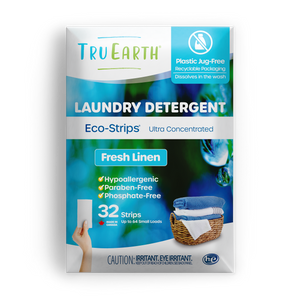Maintaining the cleanliness and appearance of your home involves various tasks, and one of the essential aspects is cleaning your floors. However, different types of flooring require specific cleaning methods to ensure they look their best and last for years.
This guide will explore the various types of floors commonly found in homes and provide expert tips on how to clean and care for each of them so that you can enjoy a clean and inviting living space.

Hardwood Floors
Characteristics
Hardwood floors are known for their natural beauty and durability, adding warmth and elegance to any room. However, they can be sensitive to moisture and scratches.
Regular Sweeping
To maintain hardwood floors, it's essential to use a soft-bristle broom or a microfiber dust mop to sweep away dust and dirt daily.
Damp Mopping
For deeper cleaning, use a damp mop with a hardwood floor cleaner that is specifically designed for your floor type. It's important to avoid using excess water, as it can damage the wood's integrity.
Avoid Harsh Chemicals
One of the essential tips for hardwood floor maintenance is never to use abrasive cleaners or harsh chemicals, as they can strip away the finish and harm the wood's appearance.
Protect from Scratches
To prevent scratches, it's advisable to place area rugs in high-traffic areas and felt pads under furniture legs.
Tile Floors
Characteristics
Tile floors, available in various materials like ceramic, porcelain, and natural stone, are incredibly versatile. They are durable and resistant to moisture.
Regular Sweeping or Vacuuming
Keep your tile floors clean by using a broom or a vacuum cleaner with a brush attachment to remove loose dirt and debris.
Mopping
Use a tile floor cleaner mixed with warm water for mopping. It's essential to avoid using abrasive scrubbers that can scratch the tile's surface.
Grout Cleaning
Cleaning the grout lines between tiles can be challenging. To clean grout effectively, you can use a grout cleaner or a mixture of baking soda and water. It's necessary to scrub with a grout brush for the best results.
Seal Grout
To prevent stains and moisture absorption, consider sealing the grout lines.
Carpeted Floors
Characteristics
Carpets offer warmth and comfort, making them popular for bedrooms and living areas. However, they are prone to staining and trapping allergens.
Regular Vacuuming
To maintain carpeted floors, vacuum your carpets at least once a week to remove dust and dirt. A vacuum cleaner with a HEPA filter is ideal for capturing allergens.
Spot Cleaning
When dealing with spills and stains, it's essential to address them promptly with a carpet stain remover. Blotting the stain with a clean cloth, rather than rubbing, is the recommended approach.
Deep Cleaning
Schedule professional carpet cleaning every 12-18 months to remove deep-seated dirt and allergens effectively.
Use Rugs
To protect your carpet from wear and tear, it's advisable to place area rugs or runners in high-traffic areas.
Laminate Floors
Characteristics
Laminate floors mimic the appearance of hardwood or tile but are more affordable and easier to maintain. They are durable and resistant to scratches.
Regular Sweeping or Vacuuming
Keep your laminate floors clean by removing loose dirt and dust with a soft-bristle broom or a vacuum cleaner.
Damp Mopping
For deeper cleaning, use a damp mop with a laminate floor cleaner. Like with other flooring types, avoid using excess water, as it can cause the planks to swell.
Spot Cleaning
To prevent staining, it's essential to quickly address spills. A damp cloth or a laminate floor cleaner can be used for spot cleaning.
Avoid Abrasive Tools
Lastly, do not use abrasive scrubbers, steel wool, or wax on laminate floors, as they can damage the surface and affect its appearance.
Vinyl Floors
Characteristics
Vinyl floors are resilient and waterproof, making them suitable for kitchens and bathrooms. They come in various styles, including vinyl plank and vinyl tile.
Regular Sweeping or Vacuuming
To keep your vinyl floors clean, use a broom or a vacuum cleaner to remove dirt and dust.
Mopping
For mopping, it's advisable to use a vinyl floor cleaner mixed with warm water. Avoid using abrasive cleaners that can damage the surface.
Avoid Waxing
Most modern vinyl floors do not require waxing. It's essential to check the manufacturer's recommendations.
Protect from Scratches
To prevent scratches and dents from heavy furniture, use furniture pads.
Natural Stone Floors
Characteristics
Natural stone floors, like marble, granite, and travertine, offer a luxurious and timeless appearance but require special care.
Dust Mopping
Use a soft dust mop or a dry microfiber mop to remove dirt and dust regularly.
Damp Mopping
For deeper cleaning, dampen a mop with a stone-specific floor cleaner and warm water. Rinse thoroughly to prevent residue buildup.
Sealing
Natural stone floors should be sealed regularly to protect them from stains and moisture. The frequency of sealing depends on the type of stone.
Avoid Acidic Cleaners
Acidic cleaners, like vinegar and lemon juice, can etch and damage natural stone surfaces. Stick to pH-neutral cleaners.

Unlocking the Secrets to Perfect Floor Cleaning
In conclusion, the key to maintaining clean and beautiful floors in your home is understanding the type of flooring you have and applying the appropriate cleaning methods and precautions.
By following these expert tips for each flooring type, you can enjoy a hygienic and visually appealing living space that reflects your care and attention to detail.


